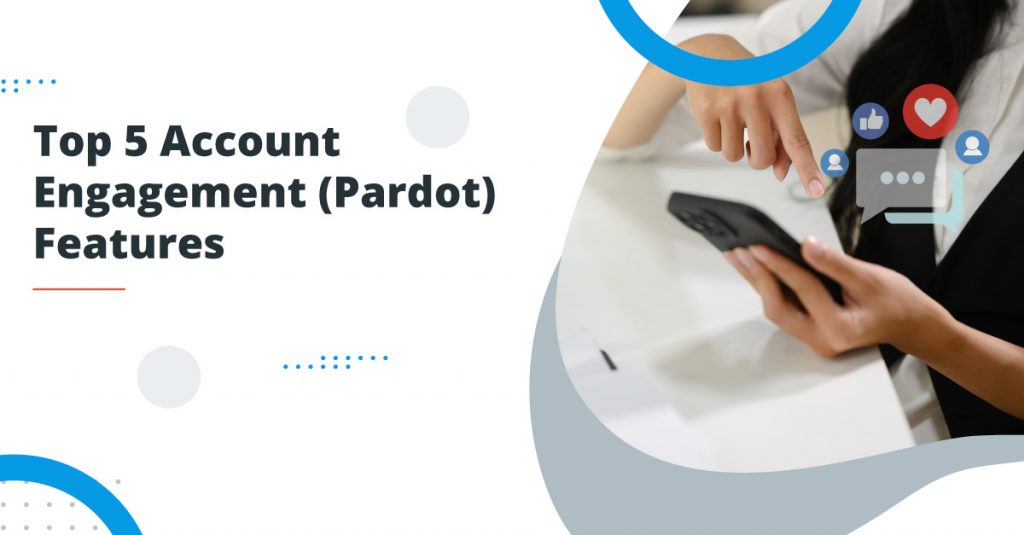We all know how efficient Marketing Cloud is, especially for B2C organizations. But when it comes to the B2B sector, Account Engagement is always the first preference. Pardot or Marketing Cloud Account Engagement, is a robust marketing automation platform, assisting marketers to detect potential customers and convert them. This is becoming the main reason why companies these days are hiring a top Salesforce Pardot consultant to make the most of the product.
Pardot allows you to create automated marketing campaigns, route leads to sales, analyze prospect activity, and guide prospects through their buying journey. Pardot helps any kind of business to build their online presence and aims to strengthen customer relationships. Pardot is integrated with Salesforce and allows you to track the prospect engagement and performance of online marketing campaigns directly within your CRM. The platform helps to unify various marketing and sales functions.
In this blog, we’ll be covering these top features that are making Account Engagement so amazing for companies looking to improve their marketing campaigns.
Top Features of Account Engagement You Should Work With
Pardot or Account Engagement has its own benefits when it comes to marketing automation for the B2B sector. But there are numerous features the platform holds that make it so efficient. We’ve filtered some of the best features that you can start working with.
1. Connected Campaigns
Connecting Salesforce and Pardot Campaigns ensures that campaign data is easily accessible and valuable for both Marketing and Sales teams. We highly recommend this setup to align reporting across both systems. Once enabled, Campaigns created in Salesforce are automatically synced with Pardot.
This approach complements a comprehensive Campaign Hierarchy, where Campaigns are linked via the Parent Campaign field. Each Campaign can have only one parent but unlimited sibling Campaigns, with a hierarchy depth of up to five levels. Adopting Parent/Child Campaign hierarchies allows users to drill down into individual Campaign metrics (child) while also viewing a summary on the Parent Campaign.
Connected Campaigns provide enhanced visibility into marketing performance, enabling multi-touch attribution to evaluate the impact of each touchpoint. Additionally, this integration allows data to be pulled into the B2B Marketing Analytics app, creating detailed reports based on Salesforce and Pardot Campaigns.
2. Create Page Actions with Scoring Categories
Page actions are triggered when a prospect views a specific page on your website. Each time this occurs, it is recorded in the ‘Prospect Activity’ section of their prospect record. This feature is powerful because it allows us to identify a prospect’s interests and their position in the buying journey, enabling more effective and efficient marketing. The right Salesforce consultant can help you implement Pardot and access the feature smoothly.
While this is a key Pardot best practice, it can be enhanced further with Scoring Categories.
Scoring Categories reflect a prospect’s engagement with your business by accumulating points, either as an overall score or in subcategories based on specific activities. When used together, this feature can adjust a prospect’s score in Pardot, depending on the points assigned to certain pages. By leveraging this capability, we can better segment prospects for lead qualification.
3. Chatter Collaboration on Email
With Slack taking center stage in Salesforce collaboration discussions, Chatter has often been overlooked. But why should marketers care about Chatter? Chatter simplifies gathering feedback, insights, and involving stakeholders.
For example, you can post questions and polls directly next to your email content and campaign records. Additionally, salespeople can click “Follow” on campaigns they are interested in. Chatter also lets you share files and links relevant to your marketing activities. While using Chatter in this way might seem minor, it can significantly break down silos and improve transparency.
4. Use A/B in Engagement Studio
Given the significant time and effort you invest in designing Engagement Studio programs, it’s essential to incorporate A/B tests to determine the most effective paths for each program. However, it’s important to note that there is no dedicated ‘A/B testing’ button in Engagement Studio. Instead, you need to integrate A/B testing within the individual Engagement Programs’ workflows.
There are several ways to accomplish this, with the easiest method being to assign all prospects an A/B variable using a formula field or Salesforce Flow. You can then use Engagement Studio’s rule step to split your prospects into A and B paths. You can hire a Salesforce Pardot consultant to access this feature efficiently.
5. Access Dynamic Lists on Email Preference
Email preferences go beyond opt-ins and opt-outs. Customer-centric email preference management lets individuals choose the types of communications they want to receive. Fortunately, Account Engagement offers a built-in solution for this.
You can automatically subscribe people to public lists based on their demographics, behavior, and interests. With dynamic public lists, prospects can still unsubscribe or opt-down as usual without any extra configuration. The only task for an Account Engagement (Pardot) admin is to set the criteria for these public lists.
Hire a Salesforce Pardot Consultant Today
Pardot is worldwide recognized for its amazing features that are transforming marketing operations for B2B businesses. But being a little on the complex side, it is necessary to have the support of a Salesforce consulting firm that will help you leverage the best features of Pardot.
Simply contact us and work with the trusted Salesforce professionals who will streamline your marketing campaigns, enabling you to get better operations and results.

